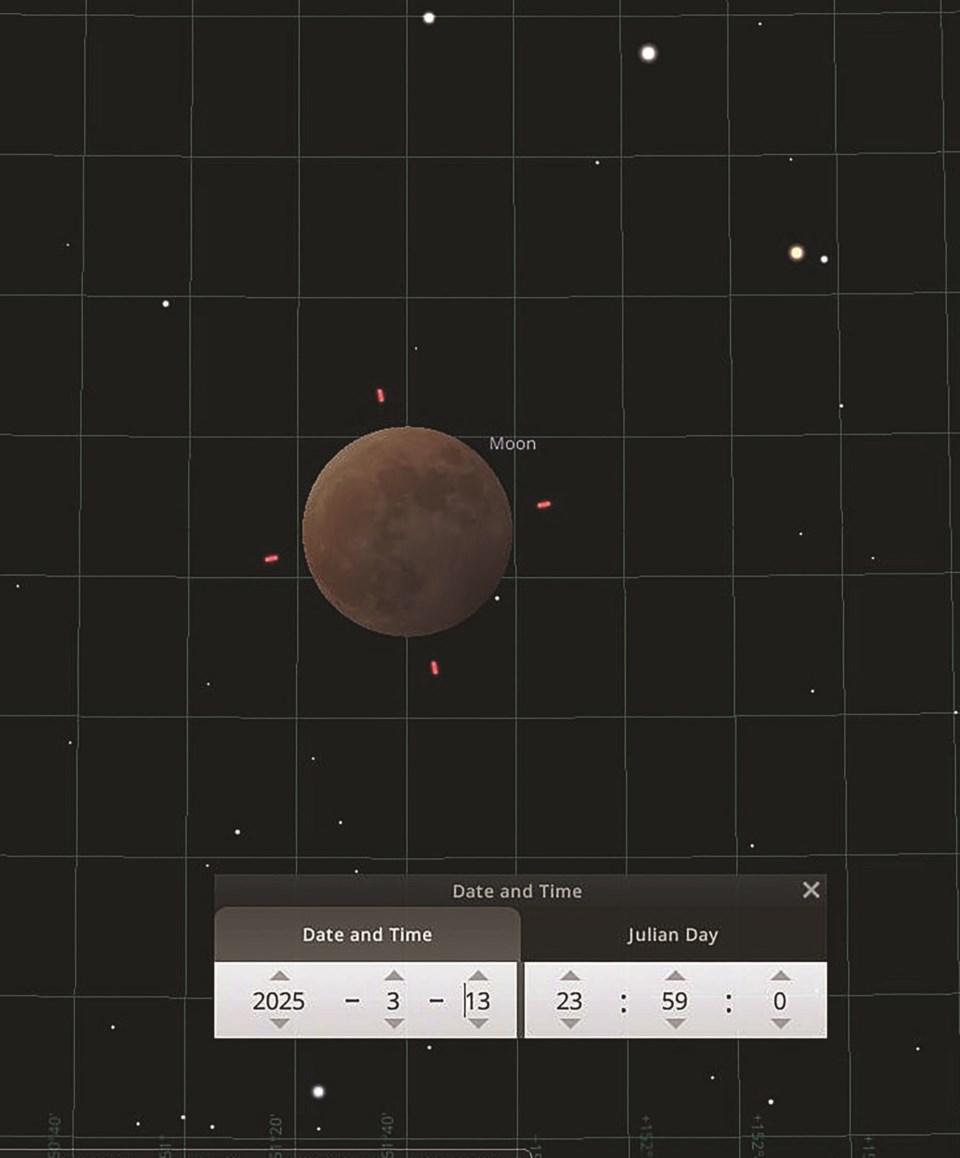This month Venus and Mercury take over from Mars and Jupiter as the brightest and best show, in the west right after sunset. Mars and Jupiter are still there, of course but Mars is fading quickly as we pull away from it; Jupiter, the same but less so. Our inner neighbours are both east of the Sun, Venus heading between us and the Sun and Mercury coming out from behind it.
The first week of March will see Venus catching us and heading for its inferior conjunction –– when it passes between us and the Sun –– on March 22/23. It will be a striking crescent as it approaches, growing larger but thinner as it passes us and becomes visible in the morning skies this spring. With binoculars, the evening of March 1 will show both the Moon and Venus as thin crescents low in the west after sunset. Venus will appear as a very thin crescent about one-thirtieth the size of the crescent Moon.
Once you’ve seen the two close by and showing the same partial lighting from the Sun, it becomes obvious why the Earth-centred solar system model didn’t survive for long after the invention of the telescope. For the first week of March, Venus will dive down to the right as it heads between us and the Sun but Mercury will be due west and simply climb straight up from the horizon until about March 10 when it too dives for the horizon.
The next notable event in our skies begins about 22:10 on the evening of March 13. The full Moon starts to pass through Earth’s shadow and the bottom limb of the Moon begins to go dark as Earth cuts off the sunlight. This eclipse sees the Moon go across the northern side of the Earth’s shadow, half shadowed by about 22:45 and becoming total when the whole Moon is in complete shadow (the umbra) at about 23:25. At that point, the only light hitting the Moon will be that small amount refracted through Earth’s atmosphere. Depending on that clarity, the Moon may appear as anywhere from a pale gray to a very dull brick-red colour. I have seen lunar eclipses so dark they were actually very hard to see unless you knew exactly where to look. The progression reverses itself starting at about 00:30 on March 14 and the Moon completely leaves the shadow by about 01:50. The full Moon before and after is dazzlingly bright but the eclipse hides in plain sight. The screenshot attached shows mid-eclipse.
Those with telescopes will be familiar with the back-and-forth motion of Jupiter’s four big moons: Io, Europa, Ganymede and Callisto. They were discovered by Galileo, noted in his letter of Jan. 7, 1610, and they revolutionized our understanding of the solar system. Interestingly, the biggest one, Ganymede, is actually larger than the planet Mercury, although not as massive, since Mercury is basically an 80 per cent iron/nickel ball with a thin covering of rocky material. Callisto is almost as big and the inner two, Io and Europa, are roughly the size of our Moon. Their orbits range in size: Io is about as far out as our Moon but orbits about every two days while Callisto is almost five times as far out and takes about 17 days per orbit. March 22/23 will see all four moons close to Jupiter as they all seem to line up in front or behind the giant planet and that doesn’t happen very often.
Finally, we’re still waiting for the predicted flareup of T Corona Borealis, an ageing binary star system in that constellation. I still think (hope) it’ll kick off before I do. The dead core of one of the stars is accreting hydrogen blown off by the other one and eventually the whole works goes thermonuclear and we’ll see what a planetary-sized hydrogen bomb looks like. Check its brightness goings-on and many other events at https://www.spaceweather.com/
The next SCAC monthly meeting will be at the Sechelt Library, March 14, at 7 p.m. The speaker will be Dr. Allison Man, assistant professor of astronomy and astrophysics at UBC; her topic will be “The Life and Death of Stars.”




